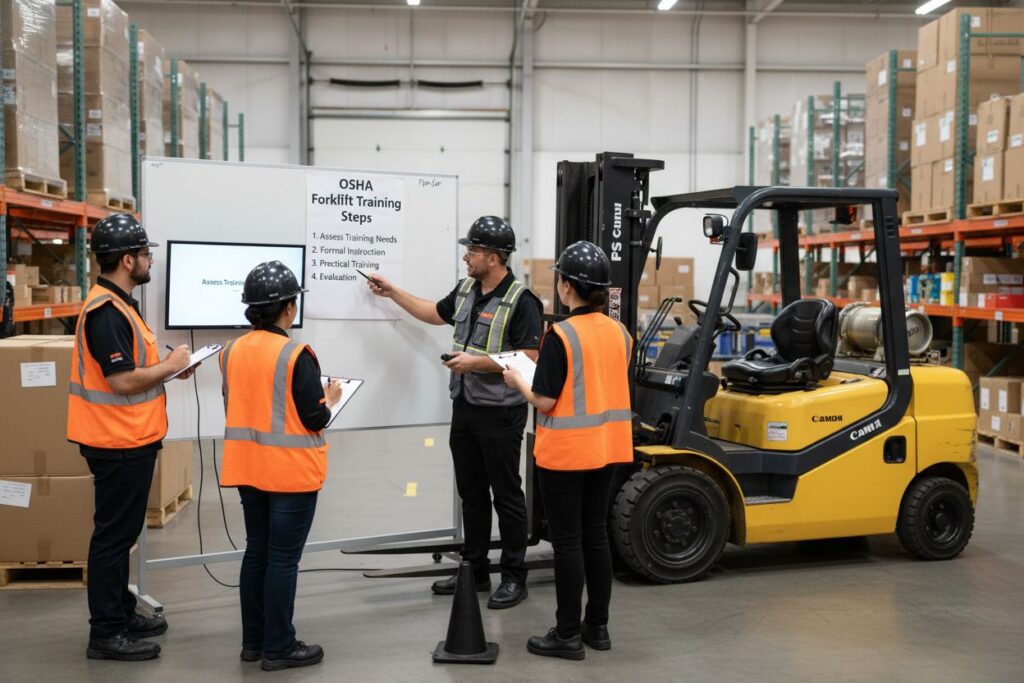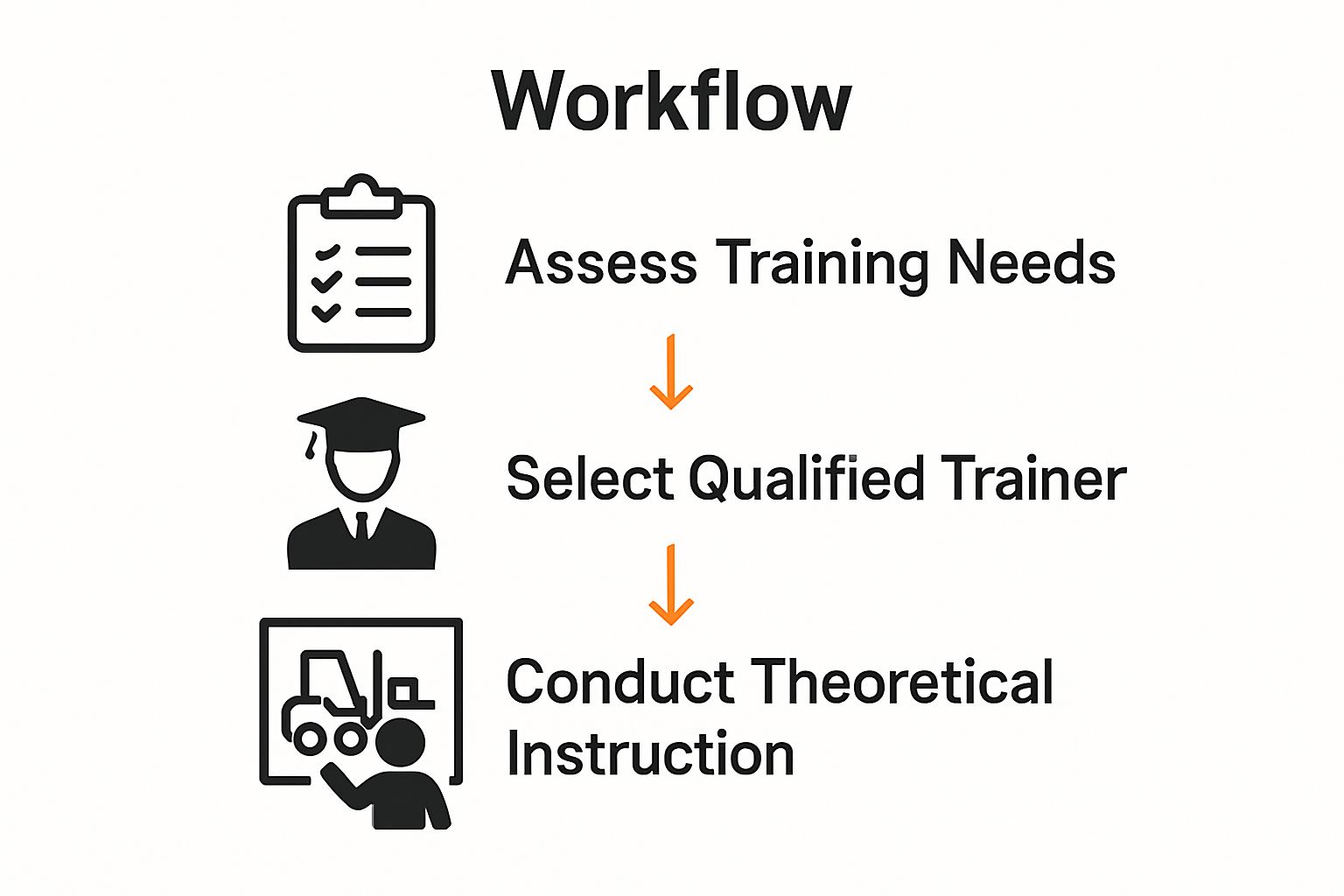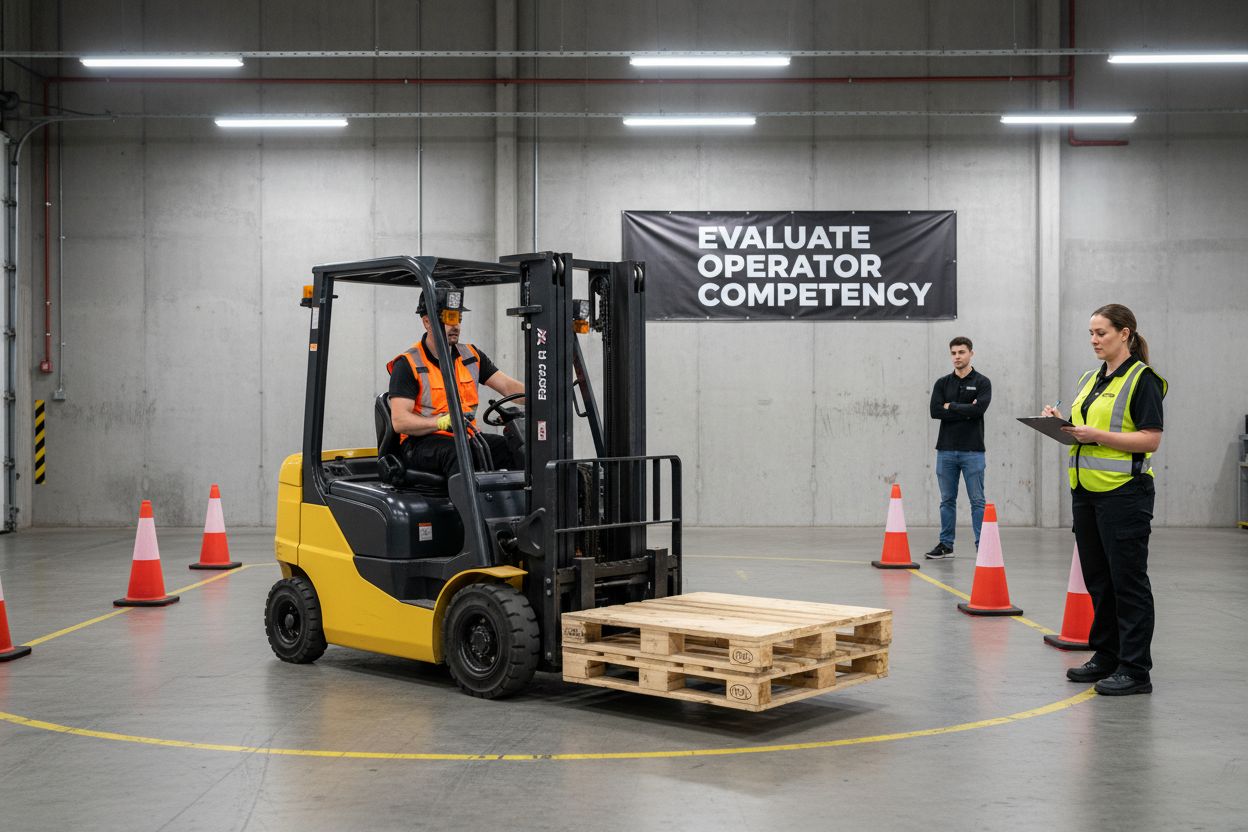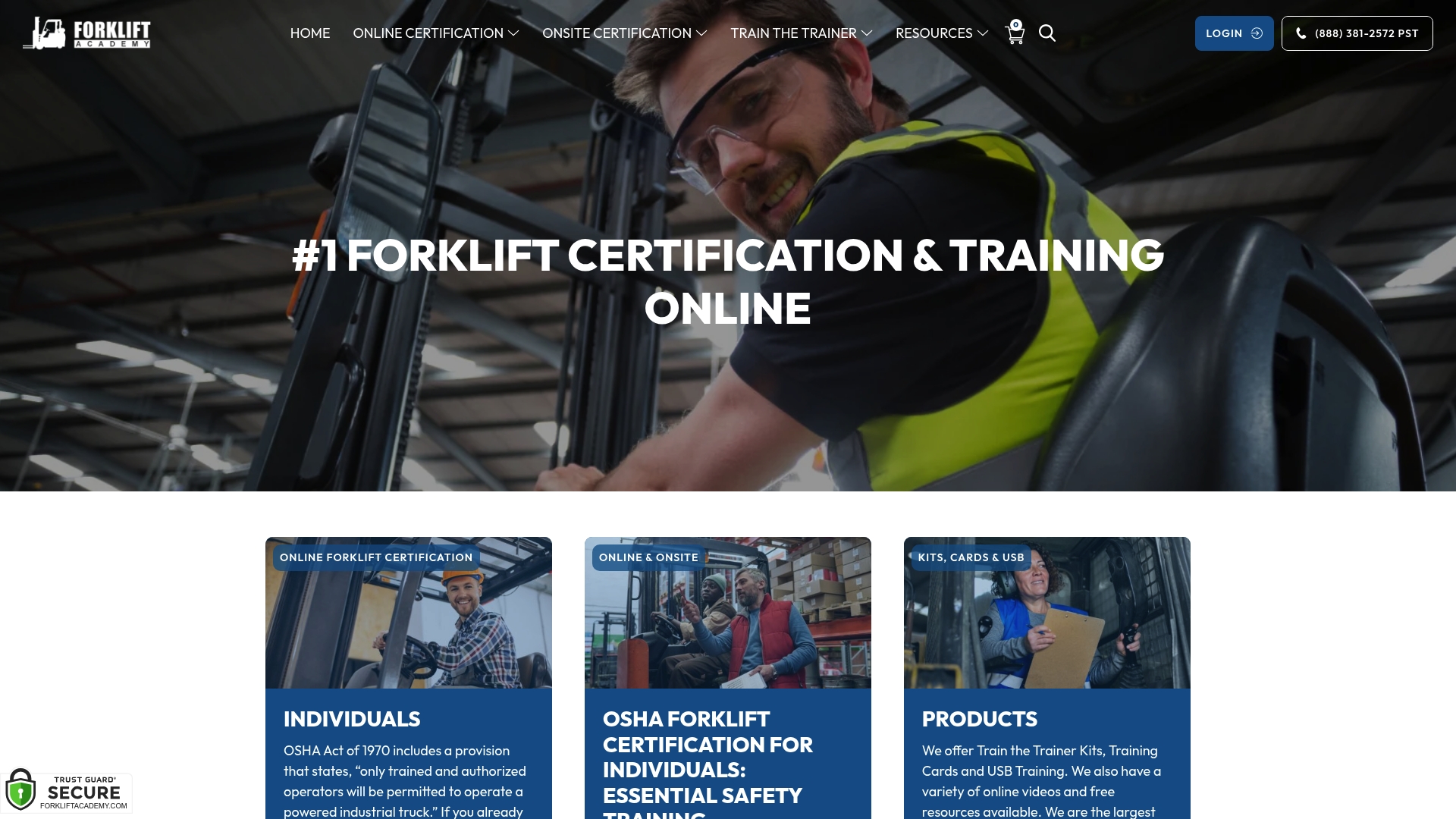
Forklift safety training is more than a regulatory checklist for any workplace that uses heavy equipment. OSHA reports that nearly 35,000 serious injuries happen each year in forklift-related incidents. Most would assume training is just about getting employees certified and moving on. The real difference between safe and unsafe workplaces comes from a training process that keeps evolving long after that first certificate is issued.
| Key Point | Explanation |
|---|---|
| 1. Comprehensive Needs Assessment | Evaluate operational environments and workforce to identify training needs for safe forklift operation. |
| 2. Select Qualified Trainers | Choose trainers with operational experience and effective instructional skills to meet OSHA standards. |
| 3. Structured Theoretical Instruction | Implement engaging classroom training that covers safety regulations and practical operational guidelines. |
| 4. Practical Hands-On Training | Conduct training that simulates real conditions, focusing on skill application and safety mindset. |
| 5. Maintain Documentation and Refreshers | Keep thorough training records and implement ongoing training to uphold safety standards and skills. |
Preparing for OSHA forklift training begins with a comprehensive needs assessment that ensures workplace safety and regulatory compliance. Employers must systematically evaluate their operational environment and workforce requirements to develop an effective training strategy. Learn more about OSHA compliance requirements to support your initial assessment process.
The assessment process starts with a thorough workplace analysis that identifies specific forklift operation contexts within your organization. Workplace hazard identification becomes critical during this initial stage. Managers must carefully examine the types of powered industrial trucks used, the specific tasks performed, and the unique environmental conditions that operators will encounter. This means walking through work areas, observing current operations, and documenting potential risk factors that could impact safe forklift operation.
Documenting your current workforce’s skill levels forms another crucial component of the training needs assessment. Employers should conduct individual skill evaluations to determine existing competencies and knowledge gaps. This involves reviewing current operator certifications, understanding past safety incidents, and assessing each employee’s practical experience with different types of forklifts. By creating a detailed skills matrix, organizations can develop targeted training programs that address specific learning needs and ensure comprehensive safety preparation.
OSHA mandates that employers verify operator competence through a combination of formal training, practical evaluation, and ongoing assessment. Your assessment should result in a clear training roadmap that outlines:
Successful completion of this step means having a comprehensive understanding of your organization’s unique training requirements, potential safety challenges, and a strategic plan for developing fully qualified forklift operators who meet all regulatory standards.

Selecting the right forklift trainer or training program represents a critical decision that directly impacts workplace safety and regulatory compliance. Explore our comprehensive train the trainer program to understand the nuanced requirements for effective instruction. Employers must carefully evaluate potential training resources to ensure they meet OSHA standards and provide comprehensive skill development for forklift operators.
Trainer qualification assessment involves examining multiple critical factors beyond basic credentials. The ideal trainer combines practical operational experience with deep understanding of safety protocols and instructional capabilities. Look for professionals who demonstrate not just technical knowledge, but also the ability to communicate complex safety concepts effectively. This means seeking trainers with verifiable experience operating forklifts in environments similar to your workplace, combined with recognized certification in safety training methodologies.
The training program selection process requires a comprehensive approach that goes beyond surface-level considerations. Employers should thoroughly investigate the curriculum’s alignment with OSHA requirements, ensuring the program covers both theoretical knowledge and practical skills. Key evaluation criteria include the depth of technical content, hands-on training opportunities, and the program’s ability to address specific workplace hazards unique to your operational environment. Accredited programs typically provide detailed documentation of their training modules, allowing you to verify the comprehensiveness of their approach.
Your final selection should meet these critical verification points:
Successful completion of this step means identifying a training solution that not only meets regulatory requirements but also provides genuine skill development that enhances workplace safety and operational efficiency.
Below is a summary table of key verification points to consider when selecting a forklift trainer or training program, helping ensure OSHA compliance and effective skill development.
| Verification Point | Description |
|---|---|
| Coverage of OSHA Safety Regulations | Ensures trainer or program addresses all regulatory standards |
| Practical Skill Demonstration | Requires hands-on proof of forklift operation abilities |
| Customization for Workplace | Adapts training to specific environmental needs and hazards |
| Certification and Documentation | Provides clear processes for acknowledging completed training |
| Ongoing Support and Recertification | Offers resources for continued compliance and skill updates |
Theoretical instruction represents the foundational knowledge transfer critical to developing safe and competent forklift operators. Learn more about essential forklift safety practices to support comprehensive training approaches. This phase transforms abstract safety concepts into practical understanding that operators will apply in real-world workplace environments.
The theoretical training process requires a structured approach that systematically covers critical safety principles and operational guidelines. Comprehensive classroom instruction should encompass detailed explanations of forklift mechanics, operational risks, and preventative safety measures. Trainers must create an engaging learning environment that encourages active participation and deep comprehension of potential workplace hazards. This means moving beyond simple lecture formats and incorporating interactive discussions, scenario-based learning, and visual demonstrations that help participants understand the real-world implications of safety protocols.
Operators must develop a robust understanding of technical and regulatory components during theoretical training. Key instructional elements include comprehensive coverage of OSHA regulations, equipment inspection procedures, load handling techniques, and workplace navigation strategies. Instructors should emphasize the importance of pre-operation equipment checks, understanding load capacities, recognizing potential environmental risks, and implementing proper communication protocols in shared workspace environments. The goal is not just knowledge transfer but cultivating a safety-first mindset that operators will carry into their daily work responsibilities.
Successful theoretical instruction should result in participants demonstrating:
Verification of learning occurs through comprehensive written assessments, verbal examinations, and instructor observations that confirm participants have internalized critical safety concepts before advancing to practical training modules.
Practical hands-on training transforms theoretical knowledge into real-world operational skills, representing the most critical phase of forklift operator preparation. Explore advanced training techniques for forklift operators to enhance your understanding of effective skill development. This stage requires a carefully structured approach that simulates actual workplace conditions while providing supervised learning opportunities.
Controlled environment training becomes essential during this phase, where operators demonstrate their ability to apply classroom learning to actual forklift operation. Trainers must create scenarios that progressively challenge participants, starting with basic maneuvers and gradually increasing complexity. This means designing practical exercises that test an operator’s ability to navigate tight spaces, handle various load types, understand weight distribution, and maintain situational awareness. The goal extends beyond simple mechanical operation to developing a comprehensive safety mindset that anticipates potential workplace risks.
Successful practical training requires meticulous observation and personalized feedback from qualified instructors. Skill progression involves carefully monitored performance assessments that evaluate not just technical competence, but also decision-making abilities in dynamic environments. Operators must demonstrate proficiency in pre-operation inspections, smooth acceleration and braking techniques, precise load handling, and emergency response protocols. Trainers should provide immediate, constructive feedback that helps participants understand both their strengths and areas requiring improvement. This approach ensures that each operator develops muscle memory and intuitive understanding of safe forklift operation.
The practical training verification process should confirm:
Successful completion means each operator can confidently and safely operate a forklift in their specific workplace environment, with skills that meet or exceed OSHA regulatory standards.
Competency evaluation represents the critical checkpoint that confirms an operator’s readiness to safely manage forklift operations in real-world environments. Discover the essential skills every forklift operator must master to understand the comprehensive assessment approach. This step transforms training investments into measurable safety outcomes by rigorously testing both theoretical knowledge and practical performance.
Comprehensive assessment methodology requires a multifaceted approach that goes beyond simple pass-or-fail evaluations. Trainers must design evaluation processes that systematically examine an operator’s cognitive understanding, physical skills, and situational decision-making capabilities. This means creating assessment scenarios that simulate complex workplace conditions, challenging operators to demonstrate not just technical proficiency, but also risk awareness and adaptive problem-solving skills. Evaluators should observe operators performing intricate maneuvers, handling different load types, navigating challenging environments, and responding to unexpected workplace scenarios.
The evaluation process demands objective, standardized criteria that provide clear insights into an operator’s capabilities and potential areas for improvement. Performance measurement involves detailed documentation of each operator’s strengths and limitations, creating a comprehensive profile that guides future training and development efforts. Assessors must critically evaluate key performance indicators such as equipment handling precision, load management techniques, spatial awareness, adherence to safety protocols, and ability to anticipate and mitigate potential workplace hazards. The goal extends beyond identifying shortcomings to creating personalized development pathways that continuously enhance operator competence.
Successful competency evaluation should confirm the operator’s ability to:
Ultimately, this step provides definitive evidence that an operator is fully prepared to perform forklift duties safely and effectively, protecting both individual workers and broader organizational safety standards.

Maintaining comprehensive documentation and implementing strategic refresher training represents the final critical phase of OSHA forklift safety compliance. Learn about preparing for ongoing safety compliance to understand the importance of systematic record-keeping and continuous skill development. This step ensures that operator qualifications remain current and workplace safety standards are consistently upheld.
Documentation management requires a meticulous approach that goes beyond simple record storage. Organizations must develop a robust system that tracks each operator’s training history, certification dates, performance evaluations, and any incident reports. This comprehensive documentation serves multiple purposes, functioning not just as a regulatory requirement but as a strategic tool for identifying potential training gaps, tracking individual operator development, and maintaining a proactive safety culture. Employers should implement digital tracking systems that provide real-time insights into certification status, upcoming renewal requirements, and individual operator skill progression.
Refresher training represents a dynamic process of continuous skill maintenance and improvement. Proactive skills reinforcement involves more than mandatory recertification cycles. Employers must create an environment of ongoing learning that adapts to changing workplace conditions, new equipment technologies, and emerging safety protocols. This means developing a flexible training framework that responds to workplace incidents, introduces new operational techniques, and addresses potential skill degradation over time. Regular assessments help identify individual operators who might benefit from targeted additional training, ensuring that every team member maintains the highest possible safety standards.
Successful documentation and refresher programs should include:
Ultimately, this final step transforms forklift training from a one-time certification process into a continuous improvement journey that prioritizes workplace safety, operator competence, and organizational risk management.
Use the table below to review crucial components of an effective documentation and refresher training program for forklift operators, supporting ongoing safety and compliance management.
| Component | Purpose |
|---|---|
| Digital Training Records | Track operator training history and certifications |
| Scheduled Skills Reassessment | Identify areas needing improvement over time |
| Incident Documentation | Record workplace accidents and near-misses |
| Personalized Training Plans | Customize ongoing development based on needs |
| Continuous Skill Development | Foster a proactive safety and learning culture |
Are you struggling to ensure your team follows every step in effective OSHA forklift training? This article outlined the biggest challenges employers face, like skill gaps, compliance confusion, and keeping operator certifications up to date. A single overlooked step in the training or evaluation process can lead to costly accidents, lost productivity, or compliance penalties. But you do not have to solve these problems alone. Visit our Forklift Certification resources for expert solutions that match the strategies explained in this guide.

Protect your workplace and make forklift safety simple. Forkliftacademy.com has over 20 years of experience providing OSHA-compliant forklift training and certification. Access online courses, onsite instruction, and all the documentation tools you need to maintain safety and compliance. Start building your safest team now with our full range of forklift safety programs and certifications. Take action today to ensure every operator is truly ready and your compliance remains strong.
The key steps in OSHA forklift training include assessing training needs and compliance requirements, selecting a qualified trainer or training program, conducting theoretical instruction on forklift safety, implementing practical hands-on training, evaluating operator competency and skills, and maintaining documentation and providing refreshers.
Assessing training needs helps employers identify specific hazards related to forklift operation, evaluate the skill levels of current operators, and develop targeted training programs that ensure safety and compliance with OSHA regulations.
Theoretical instruction should cover critical safety principles, OSHA regulations, equipment inspection procedures, load handling techniques, and workplace navigation strategies, fostering a comprehensive understanding of safety protocols among participants.
Employers can maintain effective documentation by developing a digital tracking system that records each operator’s training history, certification dates, performance evaluations, and incident reports, ensuring compliance and facilitating ongoing skill development.